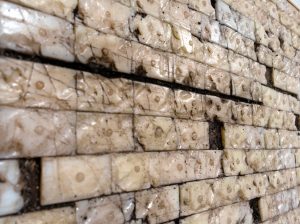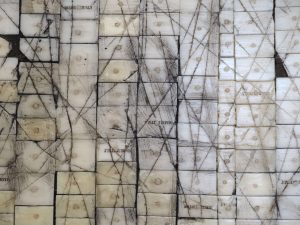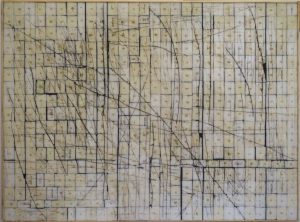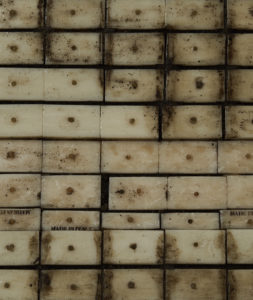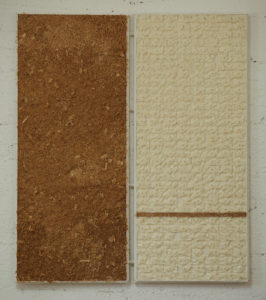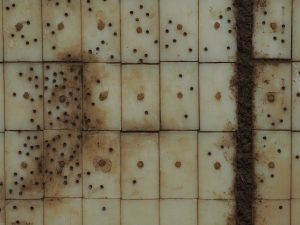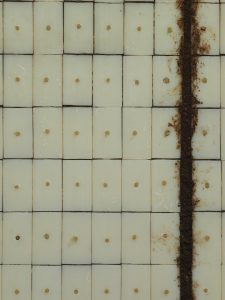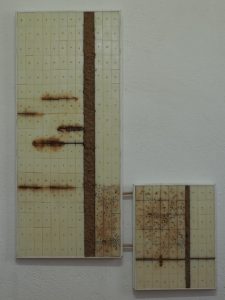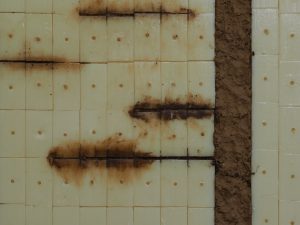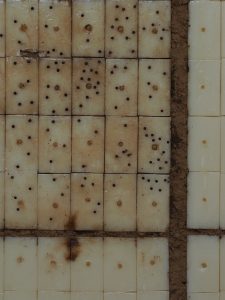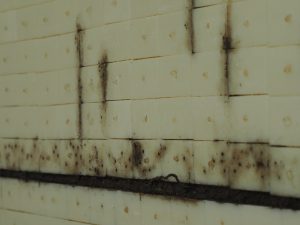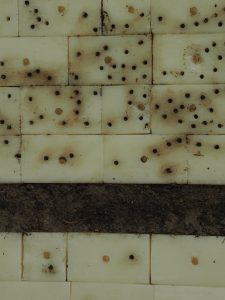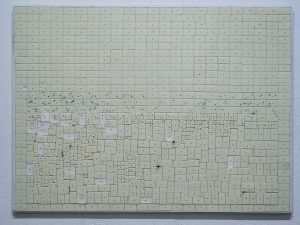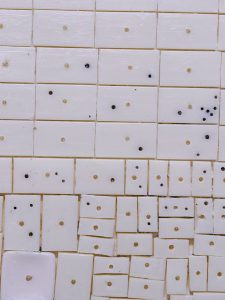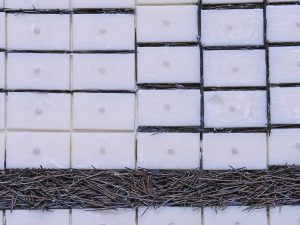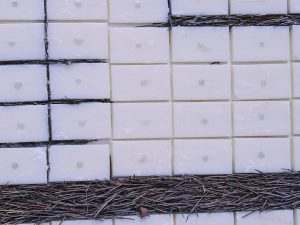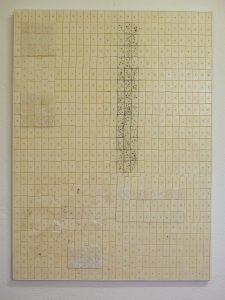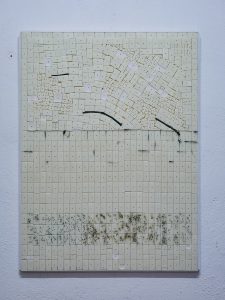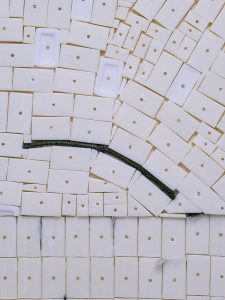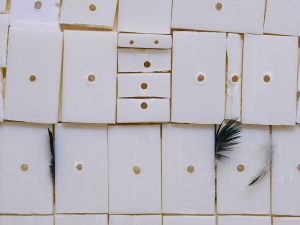Tableau parfumé – “Sapone e terra” – Saponi e terra
Tableau parfumé – “Sapone e terracenere” – Saponi, terra e cenere
Tableau parfumé – “Sapone e humus” – Saponi e humus
Tableau parfumé – “Dittico” – Saponi e terra
Tableau parfumé – “Dittico” – Saponi e segatura
Tableau parfumé – “Terra dell’orto” – Saponi e terra
Tableau parfumé – “Terra rossa” – Saponi e terra
Tableau parfumé – “Terra nera” – Saponi e terra
Tableau parfumé – “Bianco con aghi di pino e piume” – Saponi, aghi di pino, piume, polvere di legno e terra – 124x92cm
Tableau parfumé – “Bianco con radici” – Sapone, radici, polvere di legno e terra – 124x92cm
Tableau parfumé – “Bianco con aghi di pino” – Sapone, http://tamararepetto.com/wp-admin/post.php?post=431&action=editaghi di pino
Tableau parfumé – “Bianco con pizzo” – Sapone, pizzo, polvere di legno, terra – 124x92cm
Tableau parfumé – “Bianco con rami e piume” – Sapone, rami, piume, polvere di legno e terra – 124x92cm
A short circuit. All of Tamara Repetto’s visions explode in the Tableauxes parfumés. Without a doubt, the most emblematic among her works: not only because they have been crossing through her artistic research for over ten years, , but also because they embody the fundamental aspects of her stylistic code and of her artistic practice. First of all, elegance. Elegance given by a mosaic layout, architecturally tending towards order and neatness. An aesthetical resolution that conveys an intimate need, emphasised by the choice of materials: small hotel soap bars, a clear reference to purity and, in a subtler way, to transit and impermanence. Correlative of a physical and internal nomadism that go to compose and traverse works in which – as from bright floors of ancient porchs – humus, pine needles, branches, feathers, and wood dust emerge. It is above all among the trees of her two worlds (Luxembourg, or that low Piedmont region that is already Liguria, also an hybrid zone of its own) that Repetto goes to meet the things with which she arranges the wedding of memories from the undergrowth that – thrown, glued, mounted, injected on absolute white – rather than being spoiled, becomes purified. And there is another short-circuit lying in wait: while inviting to a deep contact with nature, at the same time the artist removes its sensorial and sensual experience. The soap bars have in fact been “defused” by means of a transparent varnish which blocks their olfactory trace. An unexpected glitch for the visitor, ready for a predictable outcome; a brutal and polemic idea hidden under a delightful, delicate form .
The Tableauxes therefore stand out as a criticism to that anosmic and de-smelled society, that prefers to filter and stun itself with synthetic perfumes in order to keep itself away from the “other” essence : that one which is authentic and full of a reality steeped in love and illness, pain and beauty. A reality that Repetto doesn’t refuse, but instead engages through a slow and meditative process, seeking first of all the silence inside of herself. An ascetic and solitary performative routine, a necessary one, not for reaching an emotional void, but for dosing and transferring energies: a continuous act of feeling and listening, hypnotically vibrating around the surface of the small soap bars. Something that the artist cuts out, polishes or chisels in caressing waves; in which she minutely and emblematically digs small holes reminiscent of those made by woodworms, using a “sentimental” object such as her grandfather’s old hand drill.
This is the moment in which, by following a string held between bowels and mind, the compositional harmony can derail towards an opus incertum and the overall picture can take a different rhythm, either convulsive or intermittent. It is here that, in accordance with the wabisabi philosophy, residual becomes poetry, and subtraction creates atemporality and suspension. Therefore accepting the risk of breaking something fragile.
Corto circuito. Tutte le visioni di Tamara Repetto esplodono nei Tableaux parfumés. Senza dubbio, le più emblematiche tra le sue opere: non solo perché ne attraversano la ricerca da oltre dieci anni, ma perché incarnano gli aspetti fondamentali della sua cifra stilistica e della sua pratica artistica. L’eleganza, innanzitutto. Data da una disposizione a mosaico, architettonicamente tendente all’ordine e alla pulizia. Una volontà estetica che traduce un bisogno intimo, sottolineato dalla scelta dei materiali: saponette d’albergo di piccolo formato, limpido riferimento alla purezza e, in maniera appena più sottile, al transito e all’impermanenza. Correlativi di un nomadismo interiore e fisico che vanno a comporre e percorrere lavori in cui, come da luminosi pavimenti di antichi porticati, spuntano humus, aghi di pino, rami, piume, polvere di legno. È soprattutto tra gli alberi dei suoi due mondi (il Lussemburgo o quel basso Piemonte che è già Liguria, zona ibrida anche quella) che Repetto va ad incontrare le cose con cui apparecchia le nozze tra memorie dal sottobosco che, lanciate incollate montate infilate sul bianco assoluto, anziché sporcarlo ne esaltano la purezza.
E in agguato c’è un altro cortocircuito: perché, mentre invita ad un contatto profondo con la natura, allo stesso tempo l’artista ne sottrae l’esperienza sensoriale (e sensuale). Le saponette sono state infatti “disinnescate” da una vernice trasparente che ne ha bloccato la traccia olfattiva. Inciampo imprevisto, per lo spettatore pronto ad un esito scontato; idea brutale e polemica nascosta sotto una forma squisita, delicatissima.
I Tableaux si pongono dunque come critica alla società anosmica e de-odorata, che preferisce mettere filtri e stordirsi con profumi sintetici pur di tenersi lontana dall’“altra” essenza: quella autentica, e piena, di una realtà intrisa d’amore e di malattia, di dolore e di bellezza. Quella che Repetto non rifiuta, ma affronta con un lavoro lento e meditativo, ricercando in primo luogo il silenzio dentro di sé. Una routine performativa ascetica e solitaria, necessaria non per far vuoto emotivo, ma per dosare e trasferire energie: un continuo sentire e ascoltarsi, vibrando ipnoticamente intorno alla superficie dei piccoli saponi. Che l’artista ritaglia, leviga o scalpella in onde carezzevoli; dove scava minuziosamente – ed emblematicamente – piccoli tarli usando un oggetto “sentimentale” come il vecchio trapano a mano di suo nonno.
È questo il momento in cui, seguendo una corda tesa fra viscere e mente, l’armonia compositiva può deragliare verso un opus incertum, e il quadro d’insieme prendere con un ritmo diverso, convulso o intermittente. È questo il momento in cui, in ossequio alla filosofia wabisabi, il residuo si fa poesia, e la sottrazione crea atemporalità e sospensione. Accettando il rischio di rompere qualcosa di fragile.
Anita Pepe

